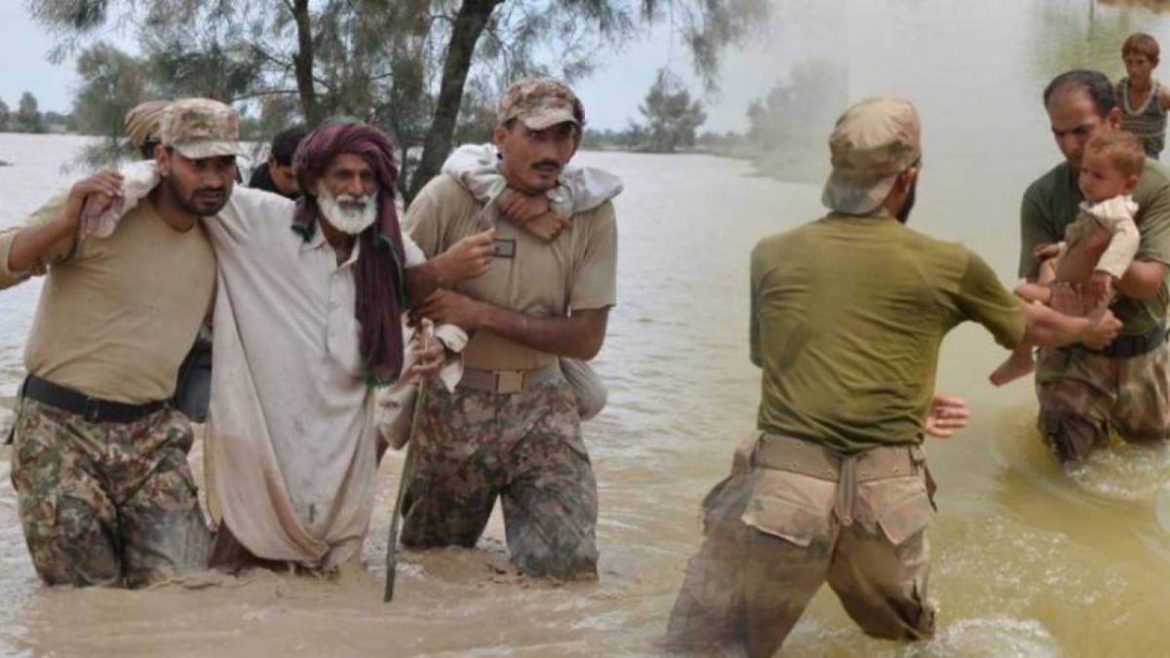Army Deployment Ordered in Punjab
The Punjab government has called in the Pakistan Army to assist with rescue and relief efforts in seven districts after days of heavy rainfall triggered flooding in several areas. The decision came on the instructions of Punjab Chief Minister Maryam Nawaz, who ordered immediate measures to protect lives and minimize damage.
According to officials, army contingents will be stationed in Lahore, Kasur, Sialkot, Faisalabad, Narowal, Okara, and Sargodha. District administrations in these regions had requested additional support as rising water levels threatened communities and strained local resources.
Joint Operations with Civil Administration
The Home Department of Punjab confirmed that a formal request for military deployment was sent to the federal Ministry of Interior. Troop numbers will be finalized in consultation with local administrations. Authorities also indicated that if required, the Army Aviation Wing and additional technical support will be dispatched to assist in evacuations and relief work.
Currently, district administrations are working alongside the Provincial Disaster Management Authority (PDMA), Rescue 1122, civil defense units, and police. These agencies are already on the frontlines, coordinating evacuations, providing medical aid, and securing vulnerable infrastructure.
Continuous Monitoring and Public Safety
A spokesperson for the Punjab Home Department said the provincial government is monitoring the situation 24/7. Authorities have assured residents that all available resources are being mobilized for public safety.
“The government is fully committed to safeguarding lives and property,” the spokesperson said, adding that flood-affected citizens should cooperate with rescue teams and follow safety advisories.
Punjab’s Flood Challenge
Flooding during the monsoon season is a recurring threat in Punjab, Pakistan’s most populous province. Authorities have also placed Pakistan on alert as heavy rains raise flood risks nationwide. Heavy downpours in July and August often cause rivers, canals, and drainage systems to overflow, particularly in low-lying rural areas.
In recent years, climate change has intensified the risk. According to the Global Climate Risk Index 2021, Pakistan ranks among the top 10 countries most vulnerable to climate-related disasters. The province of Punjab, home to over 110 million people, bears a significant share of the impact.
Past Tragedies Raise Alarm
Memories of previous disasters loom large. In 2014, devastating floods in Punjab affected over 2.5 million people and damaged hundreds of thousands of homes. More recently, Pakistan’s record-breaking floods in 2022 inundated one-third of the country, displacing more than 33 million people nationwide.
Although the current situation in Punjab has not yet reached those levels, officials emphasize that swift action is necessary to prevent widespread damage.
Coordinated Response Seen as Crucial
Analysts note that the deployment of the army is often a turning point in disaster response efforts, as soldiers bring specialized equipment, manpower, and logistical support. Their presence can accelerate evacuations and ensure relief supplies reach stranded communities.
The Punjab government has described its response as “timely and organized”, aimed at ensuring early relief and preventing major losses. By involving multiple agencies under a coordinated plan, authorities hope to reassure the public that the province is better prepared compared to previous years.
Citizens Urged to Remain Vigilant
Officials have appealed to citizens in vulnerable districts to stay alert, avoid unnecessary travel near rivers or canals, and immediately report emergencies to Rescue 1122 or local authorities. Community volunteers have also been asked to support relief teams in providing food, shelter, and medical assistance where required.
Conclusion
As rains continue, the situation remains fluid. However, with the military now joining civil institutions, Punjab authorities believe the province is better positioned to respond effectively to the unfolding flood threat.
For now, the focus remains on evacuation, relief distribution, and protecting infrastructure, while long-term challenges of flood prevention and climate adaptation continue to demand urgent attention.















